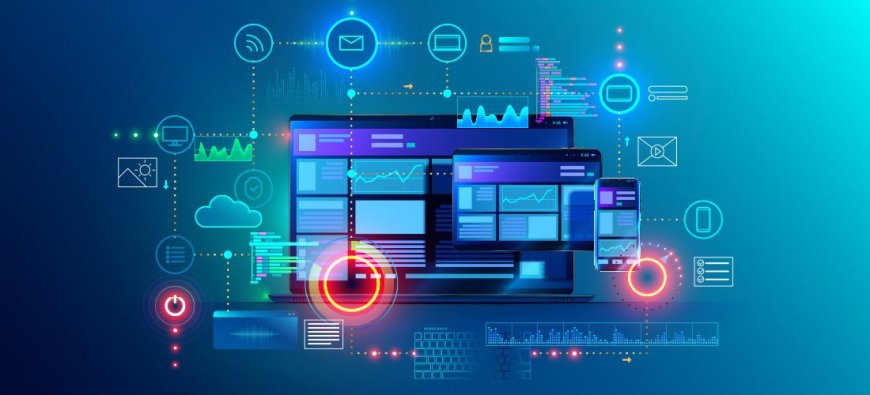What are the major challenges when it comes to legacy application modernization?
Discover the key challenges of legacy application modernization, including compatibility issues, resource constraints, and the complexity of migration. Understand how organizations navigate these obstacles to ensure smoother transitions to modern technology.

In the modern and rapidly digitizing world, the transformation of legacy applications becomes an essential activity for all organizations that want to remain competitive. There are, however, manifold challenges that threaten to hamper the successful implementation of these applications, most of which discourage many from ever trying it on. This paper explores the key challenges associated with legacy application modernization and discusses how an organization can practically address these problems.
Understanding Legacy Applications
Legacy applications are those software systems in use today that no longer meet current or future needs. The term legacy describes any system that was useful in the past, still performs some essential function, yet has become a liability due to its inability to keep up with changing business requirements and technology. Such applications need upgrading for efficiency, security, and performance.
Modern Key Challenges in Legacy Applications Modernization
1. Complex Ecosystems
The complex ecosystem of the legacy applications is one of the main challenges in their modernization. Most of the legacy systems are built on different technologies, programming languages, and databases, making them monolithic in nature. Even minor updates can trigger a cascade of compatibility issues and conflicts that disrupt business operations. Organizations often find themselves overwhelmed by the intricacies involved in untangling these systems, which can lead to significant delays in the modernization process.
2. Time Constraints
With the requirement for new or updated features and functions, modernization projects are generally under the tyranny of deadlines, which complicates the process at hand. Projects are usually balanced with ongoing modernization processes within organizations, and misallocated resource and team alignments do occur all too often. Without proper planning and prioritization of the project activities, meeting a deadline is next to impossible. Agile development techniques will help in adapting to the timing constraints of progress in incremental mode and frequent iteration, hence assuring that modernization activities do not leave a dent on service delivery.
3. Skill Shortages
It is tough to secure developers who can claim experience in both legacy and modern technologies. Most of the legacy systems have been in place for decades, and finding professionals with relevant experience is tough. A shortage of skilled personnel may decelerate modernization and increase dependence on outdated systems. The organizations need to invest either in the training of existing staff or look for external talent that can perform in both knowledge domains to bridge this skills gap.
4. Integration Issues
Another major challenge is the integration of modernized applications with the existing system. Most of the legacy applications are dependent on obsolete infrastructure or dependencies that are incapable of operating in a modern environment; this makes the implementation of new technologies or platforms troublesome. Gradual refactoring of the application code can be done to make the legacy component more self-sufficient and will be easily integrated with the modern systems.
5. Migration Challenges
Migration of data from the legacy system to modern systems has a lot of risks involved with the loss of data or corruption of data. To ensure the integrity of the data during migration, detailed planning and execution must be considered. Organizations have to set up a very clear strategy regarding ETL while maintaining all standards of compliance. This process of data migration can be made smooth and error minimal by adopting automated tools.
6. Security Vulnerabilities
Most of the old applications were designed without many of the stringent security features against cyber threats. When older systems do not match modern standards, they sometimes expose the organizations to much more critical vulnerabilities. In a modernization environment, there will be a possibility to establish higher standards for security controls that include, among others, encryption and authentication procedures. Such controls make data unreadable even in unauthorized access. It should therefore be understood that in every aspect of modernization, security would remain an integral factor to control risks arising from many unmanaged situations.
7. Cost Considerations
While modernization is key to long-term success, it normally requires significant upfront investment. Organizations are usually afraid to invest in modernization because they are concerned about immediate costs compared to benefits that are realized over time. A clear understanding of the ROI associated with modernization will help justify these expenses by highlighting the potential savings coming from reduced maintenance costs and improved operational efficiency.
How to Overcome the Challenges
The key strategies that can be used in successfully working through the associated challenges with the modernization of legacy applications include:
Thorough Assessment: Assess the existing applications to identify areas for improvement to set proper objectives for modernization.
Agile Methodologies: Inculcate agile development practices to allow incremental progress with adaptability along the modernization journey.
Invest in Training: Training in legacy as well as modern technologies for the existing staff will help upgrade them.
Leverage Automation: It is better to use automated tool sets for migrating data and the testing process since it reduces much manual effort.
Prioritize Security: Integrate strong security features from the very inception of modernization in order to protect sensitive data.
Check this: Why Legacy Application Modernization Is Critical in 2025
Conclusion
The modernization of legacy applications is a monumental task but a very important activity in the digital economy for any organization that wants to lead from the front. Organisations can only hope to develop strategies for overcoming the key challenges-whether it is complex ecosystems and skills shortages, issues of integration, or security vulnerabilities-when these challenges are understood.
As we look ahead to 2025, legacy application modernization will be a defining factor in determining which businesses thrive and which ones falter. Organizations that embrace modernization will reap the rewards of increased efficiency, enhanced security, improved customer experiences, and a competitive edge in the market if you don’t want to cling to outdated systems, partner with us for future-ready solutions. Join us on LinkedIn for exclusive insights and updates from ViitorCloud! Let’s connect and prepare for the future together!
What's Your Reaction?

























